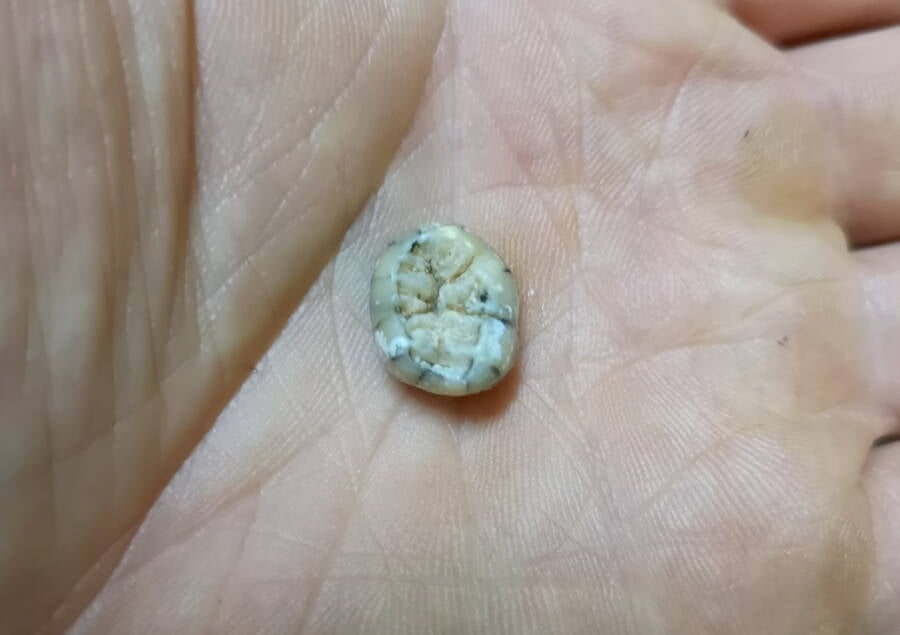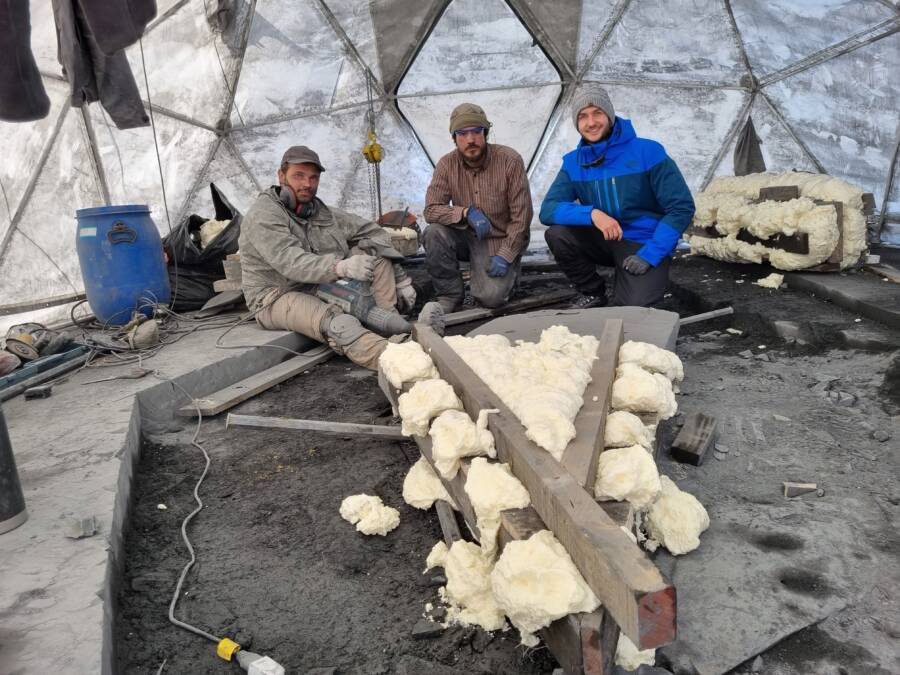Ancient human ancestor's tooth found in Laos, Greek treasures unearthed in Ukraine, pregnant ichthyosaur uncovered in Chile.
This Ancient Molar Found In A Laotian Cave Just Revealed A Hidden Ancestor In Humanity’s Family Tree

Fabrice DemeterThis lower left molar is believed to belong to a young girl between the ages of three and nine, and could be anywhere from 164,000 to 131,000 years old.
Near the end of her dig season, a paleoanthropologist working in Laos named Laura Shackelford was ready to pack it in and go home when some local children told her about a nearby cave that was supposedly filled with human bones — and cobras. Fearless and undeterred, Shackelford ventured into the cave, only to find nothing at all. But then, she recalled, “I turned my flashlight on, and I looked up. All you could see were bones and teeth, embedded in the walls and in the ceiling of this cave. They were just sort of everywhere.”
In order to extract the teeth and other remains from the cave, researchers had to chisel out soccer ball-sized rocks and soak them in acid in order to release the treasures locked inside. The most precious of all was one lower left molar belonging to a girl between three and nine who lived some 130,000 years ago. That’s because this little girl was a Denisovan, an enigmatic ancestor of early humans whose place in our family tree has remained shrouded in mystery until now. This discovery finally proves that the Denisovans would have been able to interbreed with the other ancestors of modern humans living in Southeast Asia and do indeed have a place in our story after all.
Learn more about the discovery that’s upending the history of humankind here.
Ukrainian Soldiers Just Unearthed Several Ancient Greek Amphorae While Digging Trenches In Odesa

126th Territorial DefenseThe ancient amphorae were unearthed from the port city of Odesa.
As Russia’s invasion of Ukraine has decimated cities and turned millions of people into refugees, Ukrainian defense forces in the city of Odesa have been busy building trenches for a future attack. And they just made a stunning find in the process — a trove of ancient Greek urns buried just under the surface.
Dig deeper in this report.
Paleontologists In Chile Just Unearthed A 139-Million-Year-Old Ichthyosaur Fossil — And It Was Pregnant

Alejandra ZúñigaExcavating Fiona took 13 years, and paleontologists had to work to protect the fossil from the elements.
Finding an intact ichthyosaur fossil is exciting on its own. But the ichthyosaur fossil discovered by paleontologists in Chile is not only intact — it’s pregnant and contains embryos.
The stunning fossil “is the only pregnant ichthyosaur that’s been found on the planet from the era between 129 and 139 million years ago,” Judith Pardo-Pérez, a researcher at the GAIA Antarctic Research Center at the University of Magallanes (UMAG) told Reuters. “So it’s incredibly important.”
Read on here.





